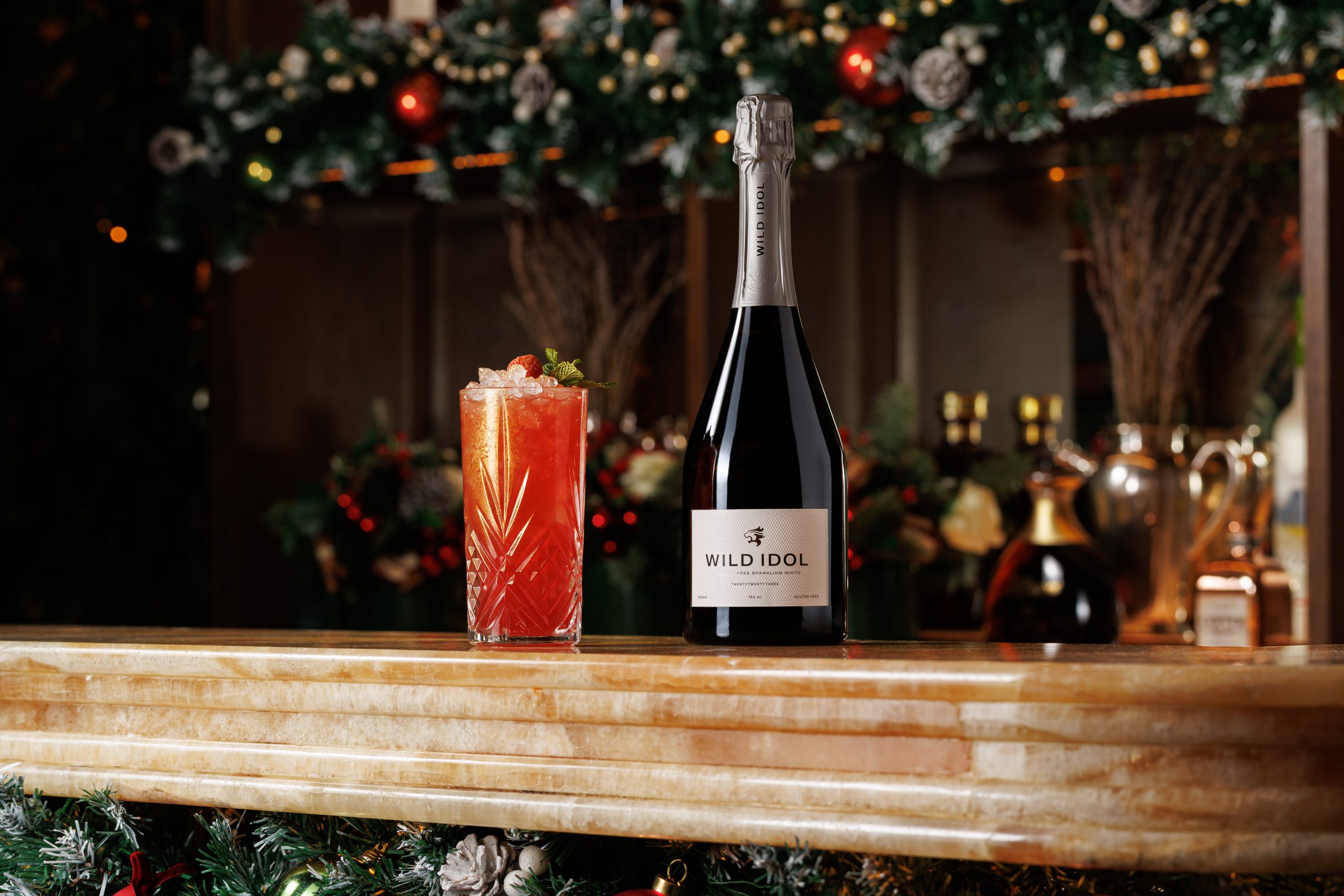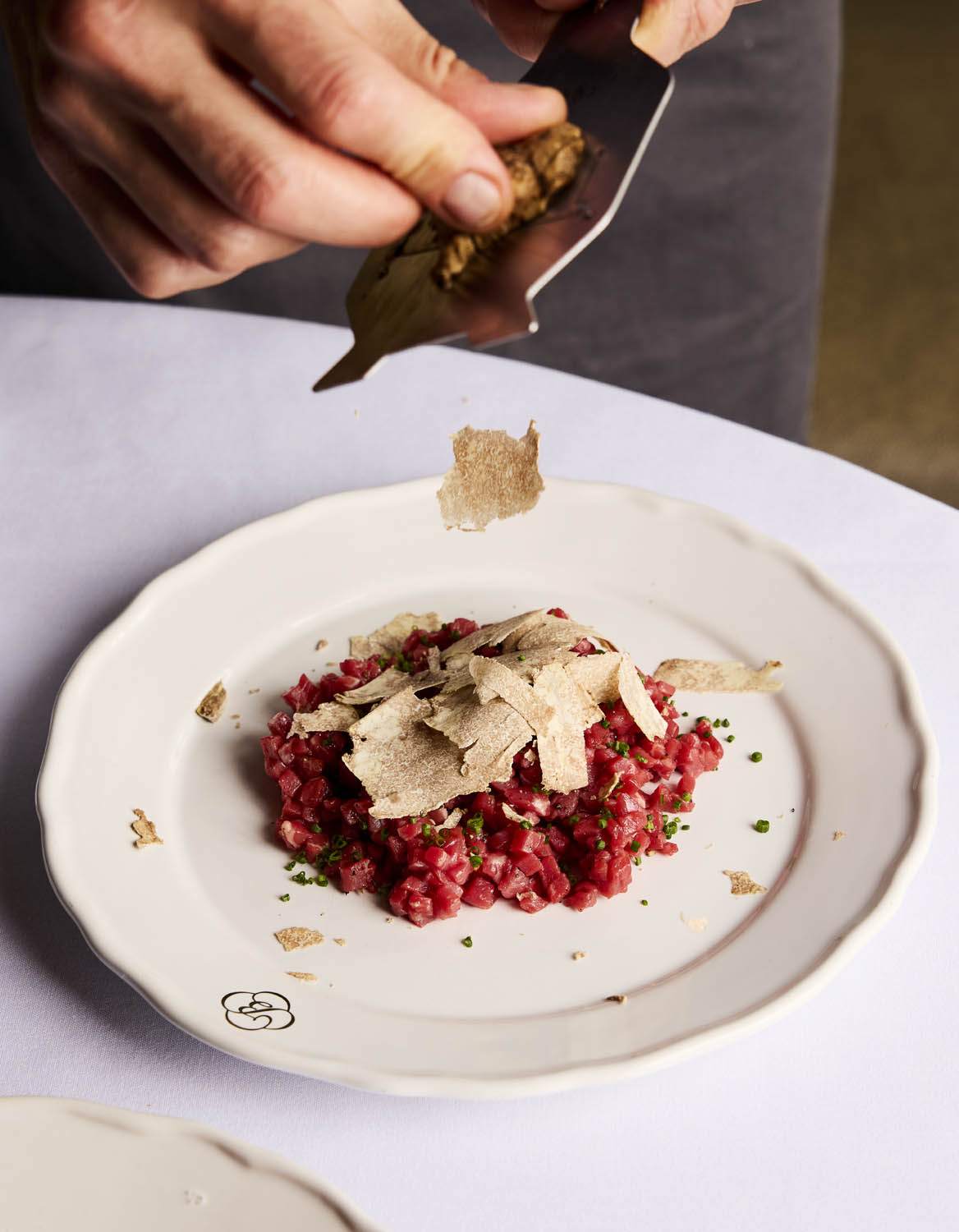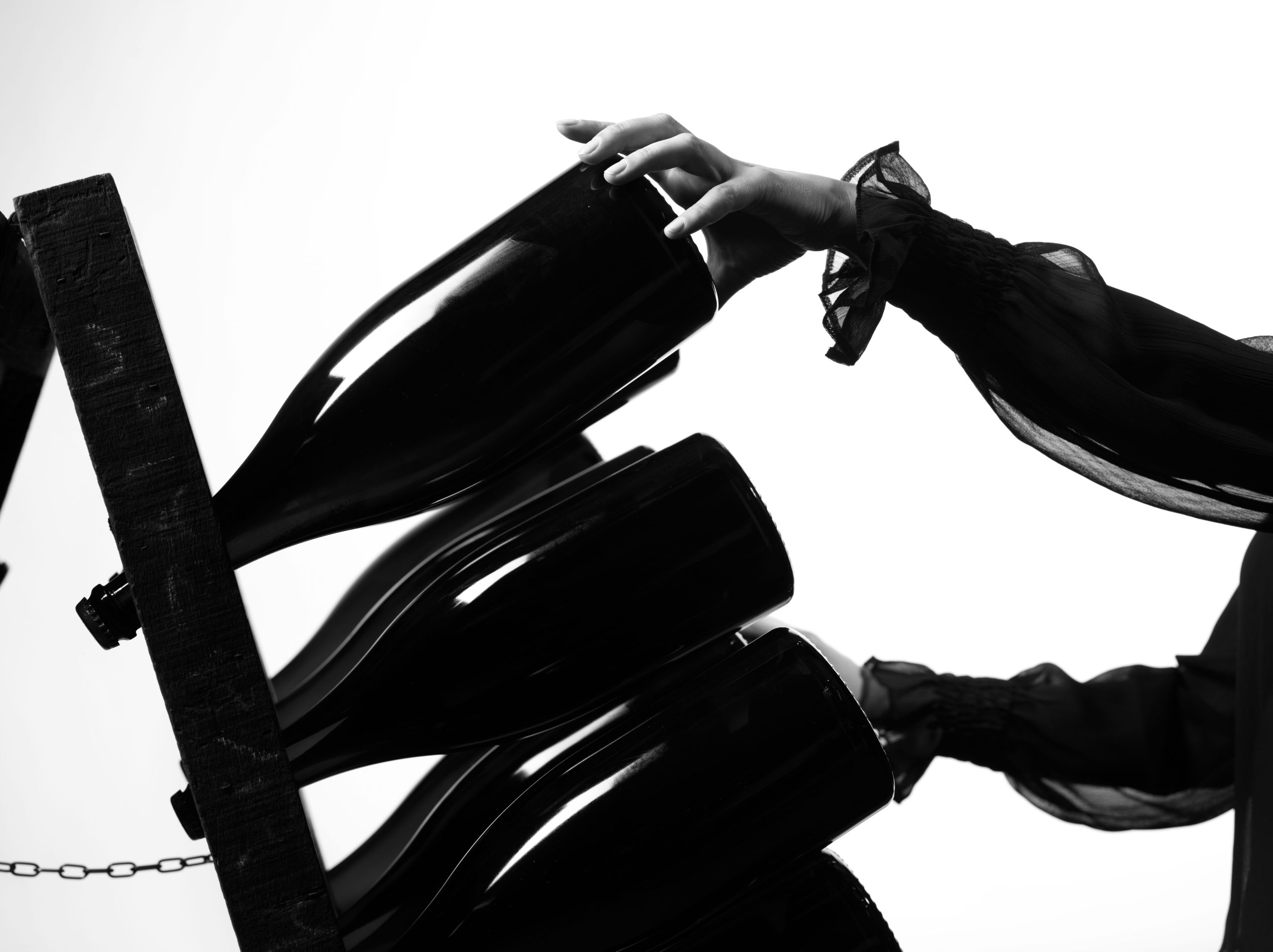Cheval Blanc release kick starts 2020 en primeur campaign
The 2020 Bordeaux en primeur campaign kicked off this week with Cheval Blanc living up to its name in being the first out of the blocks. Our Bordeaux correspondent, Colin Hay has the lowdown.
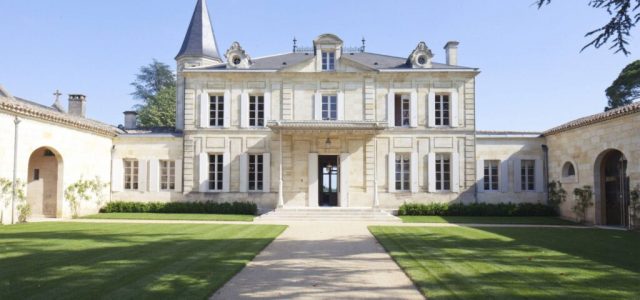
We have the first releases of the 2020 en primeur campaign – and they make for interesting reading.
For despite a general sense, before the campaign opened, that we should expect to see increases in releases prices (in euros) of between 10 and 15 per cent, practically all of the releases to date are priced below that – in some cases, quite significantly.
Indeed, it appears to me as though early releasing chateaux have had in their heads a symbolically-significant ceiling in price rises. This, thus far, seems to have been set at the sterling equivalent of their 2019 release price.
We see that perhaps most clearly with this week’s key release, the biggest of the campaign so far – Cheval Blanc. You may recall that Cheval Blanc released early, and to much critical acclaim, in 2019 too. That critical acclaim was not just for the quality of the wine, but also for the 30% reduction in release price when compared to the 2018.
Cheval Blanc 2019 was released to the market on the 8 June last year at an ex négoce per bottle price of €370. Its 2020 was released yesterday morning at €380. The sterling equivalent of the ex négoce release price of the 2019 was £329.27. The sterling equivalent of the ex négoce release price of the 2020 is £326.91.
Yet things are not quite as straightforward as this makes it sound. For the UK market price of the 2020 is actually just a little higher (at £4,656 in bond per case of 12 bottles) than that for the 2019 this time last year (which was offered at £4,500 IB for 12 bottles).
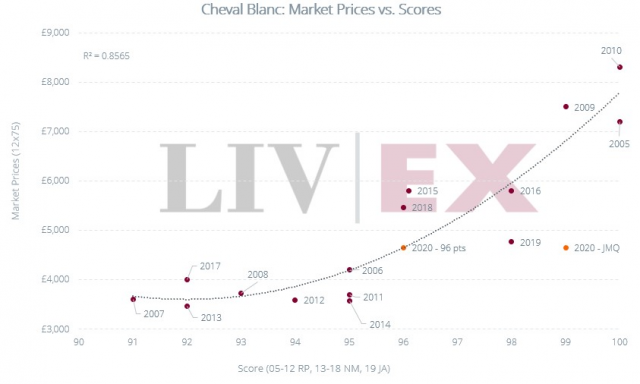
That represents an actual increase in price for the consumer of 3.5%. And it poses a question that I don’t have a clear answer to yet, but that I hope to return to in later coverage. Who is taking the extra margin? And to what extent if any, is it linked to the anticipated additional cost, post-Brexit, of bringing bottled wine in bond to the UK? Has en primeur, in short, just become more expensive? And, if so, do the chateaux need to recalibrate their symbolic price ceiling accordingly?
That is a reflection for another day. What is clear today is that Cheval Blanc’s bold move has been well received and, just as it’s 30% reduction in price last years served to breathe fresh life into the campaign just as it was stalling, so too yesterday’s release gets en primeur 2020 off to a very promising start. Liv-ex’s fair valuation methodology also suggests that at 96 points or above from whichever critic you favour, it represents a fair fine wine market deal.
I will taste Cheval Blanc next week from the Chateau, with tasting notes to follow in my appellation profile of St.-Emilion.
Among the other most notable early releases are (listed alphabetically):
Beaumont (Haut-Medoc; £106IB, UK; €8.30 ex negoc. [-5%])
Bellefont Belcier (St Emilion; £432IB, UK; €31 ex negoc.)
Bourgneuf (Pomerol; £450IB, UK)
Hosanna (Pomerol; £1000IB, UK [-5%])
Peymouton (St Emilion; £145IB, UK)
La Serre (St Emilion; £450IB, UK [-6%])
La Tour St Christophe (St Emilion; £276IB, UK; €19,20 ex. negoc.)
Partner Content
All are available in the UK at or very close to their 2019 release price. Each, in my opinion, warrants very serious consideration. In terms of value for money, it is difficult to look past Peymouton and, as ever, La Tour St Christophe.
Full tasting notes appear below for these wines
Beaumont (Haut-Médoc, cru bourgeois supérieur; 51% Cabernet Sauvignon; 41% Merlot; 8% Petit Verdot; a final yield of 40 hl/ha; 13.5% alcohol). I always think of this as a very classical Médocain claret in the British tradition, but it is important to remember that this is part of the Beychevelle group of wines and there is something of Beychevelle now in the quality of the tannins here.
On the nose, this has a lovely note of wild herbs that seems to fold itself into the ripe and crunchy red and darker berry fruit; and then a little suggestion of cedar starts to build in the glass, hinting at the wine’s evolution. Gloriously soft and refined on the entry, with cool, compact and very fine-grained tannins, this is impressively ample and broader-shouldered than you might imagine. More impressively, despite that it remains lithe and translucent on the palate – and it has a radiant fresh finish. I can’t recall a better Beaumont.
Bellefont-Belcier (St Emilion; a fantastically situated vineyard of 13.5 hectares on the limestone plateau and a south-facing clay-limestone slope, making almost a natural amphitheatre; 70% Merlot; 25% Cabernet Franc; 5% Cabernet Sauvignon; aged in a combination of oak barrels, 30% of which are new, and ovoid-shaped ceramic vessels; a final yield of 37 hl/ha; pH 3.65; 14.5% alcohol; from Vignobles K). Wonderfully situated and with the most august and refined of neighbours – Pavie, Larcis-Ducasse and Tertre Roteboeuf – and now just starting to provide some serious competition after significant investment in the vineyard and in the new wine-making facility.
Subtle and slightly introverted on the nose, this has a cool, calm natural authority and a lovely sense of harmony. The fruit is plump and dark – black cherry but also briary autumnal fruits like brambles and blackberries – and there is a lovely rich cedary-graphite minerality which works so well with the nutty aromas coming from the ripe pips. Silky and very elegant on the palate but also with bags of vertical lift and a surprisingly crystalline brightness and sense of energy. This is, for me, the most classical and elegant vintage of Bellefont that I have tasted en primeur – less flamboyant and opulent perhaps but with a generous, ample, soft and welcoming natural charm. Truly excellent and with a wonderful sense of balance and harmony.
Bourgneuf (Pomerol; from a vineyard of 9 hectares on an iron-rich gravel and clay terroir neighbouring Trotanoy; 90% Merlot; 10% Cabernet Franc; aging in oak barrels, 35% of which are new; 15% alcohol; from J-P Moueix). Incredibly dark-hued yet translucent at the core and extremely viscous, with a more radiant lilac/magenta rim. Another sumptuous nose, here with a little more toast from the oak accompanying the graphite, cedar, black cherries and blueberries, with a hint of fine dark cocoa powder and candied violets.
Big, plump and super-soft on the palate, this is extremely seductive and impressively layered and complex. I love the sappy juiciness of the fruit even on the mid-palate and the sense of dynamism and energy that it brings to the wine. This is big, bold and incredibly concentrated, yet it is also light, bright and fresh. Needless to say, that produces great tension. Classic Pomerol.
Hosanna (Pomerol; from a vineyard of 4.5 hectares on an iron-rich blue clay on red gravel terroir; 75% Merlot; 25% Cabernet Franc; aging in oak barrels, 50% of which are new; 15% alcohol; from J-P Moueix). I think this is the best vintage of Hosanna that I have yet tasted. Again, we have this most incredible and incredibly classic Pomerol nose – here with a fruit profile that is a shade darker (because of the presence of the wonderful Cabernet Franc) than Latour à Pomerol.
Cedar, mulberries, brambles and blueberries, with maybe a hint of damson too, violets and lavender, flakes of very dark chocolate and wild thyme and maybe even sage. On the palate this is diaphanous, luminous and radiant yet there is great density and concentration too. Vital, vibrant and thoroughly thrilling, this is a quite brilliant wine with so much energy and tension that dances the tight-rope between opulence and austerity, seductiveness and sobriety, depth and levity. I love it.
Peymouton (St Emilion; from a 31 hectare vineyard which combines two types of terroir – a thin layer of rich clay over limestone and a deep red clay, both on the highest part of the plateau (at 80-100 metres of altitude); 79% Merlot; 12% Cabernet Franc; 9% Cabernet Sauvignon; this was originally part of the large vineyard of Chateau Laroque but baptised as a separate property when almost half of Laroque was promoted to Grand Cru Classé status in 1996; this remains in the ownership of the Beaumartin family and the wine is made, like Laroque, by David Suire; it is an exclusivity of J-P Moueix; 14% alcohol). A great wine that really deserves to be better known.
Supremely limpid and glossy with extraordinary viscosity and very much at the lilac-magenta-purple end of the chromatic spectral range, accentuated by its shimmering translucence. This has a gorgeously floral nose – peonies and lilies with a hint of lavender and a rich, plump very ripe red and black cherry and berry fruit. I love, too, the wild heathery and almost peaty undertones and the cedar that emerges with more air. On the palate this is both rich and compact on the one hand and yet bright, sinuous and aerial on the other; it dances effortlessly on the palate and rolls as it ripples around the mouth. The grain of the tannins is very fine and this is luminous and crystalline. I really liked the 2018 tasted recently; this is even better.
La Serre (St Emilion; a vineyard of 7 hectares on a plateau terroir of clay over limestone with a southern exposition, neighbouring La CLotte and Le Prieuré; an exclusivity of J-P Moueix; 85% Merlot; 15% Cabernet Franc; aged in oak barrels, half of which are new; 14.5% alcohol). Tasted twice with similar notes. The translucent blue/purple core and the shimmering radiance of the lavender-pink rim leave a visible trace of the careful and gentle extraction.
Aromatically expressive, with a very precise and lifted nose of blueberries, black cherries and damsons and a slight hint of star anise, Chinese five spice and baie de Timut (a very floral black peppercorn). This is very elegant and sleek on the palate, with a gloriously soft entry sustained by the ultra-fine grained crumbly chalky tannins. But it’s also bright, lively and charged with fresh juicy fruit. There has been an impressive evolution here in recent vintages, with a little less extraction and a little more finesse, focus and precision. Another rising and, as yet, little known star of the appellation.
La Tour Saint Christophe (St Emilion; a wonderfully situated vineyard of 20 hectares atop the argilo-calcaire plateau and on the terraces at St Christophe des Bardes at the very limits of appellation; 80% Merlot; 20% Cabernet Franc; aged in oak barrels, 40% of which are new; yield of 37 hl/ha; a final pH 3.6; 14.7% alcohol; from Vignobles K). Interestingly, less opaque at the core than the 2018 tasted recently, but significantly darker in colour – very much towards the blue-indigo-purple end of the spectral range.
This has a typically dark autumnal fruit profile, with heather and wild lavender and thyme and rosemary and with loads of graphite – it’s very beautiful but in a very natural way, like a rugged windswept moorland. Big and quite plump on the attack but with the calcaire tannic frame reining in the fruit and projecting it forward along the spine to give great delineation, definition and interest in the almost pixilated mid-palate.
The impression of pixilation is accentuated by the texture and granularity of the tannins which become more flaky and crumbly towards the long finish. A vin de garde, most definitely, but with great potential and a worthy successor to the excellent 2018 and 2019. This is likely to remain excellent value.

